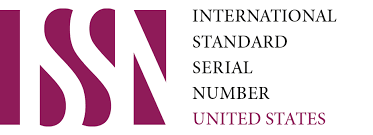Activities of the Tashkent Scientific School of Anthropology in the Study of the Racial Character of the Population of Central Asia
Keywords:
Antropology, ethnic, Khorezm, BactriaAbstract
It is considered in the present article the historiography of research of Tashkents anthropological research school on learning anthropology and ethnic history of nations of Central Asia in 1920-1960 years of XX century
References
Oshanin L.V. The large Mongoloid race, the ways of its settlement and the degree of participation in the origin of the turkish peoples of Central Asia and the Middle East // Abstracts of the conference dedicated to the 25th anniversary of CAGU. - T .: CAGU publishing house, 1945.S. 43-47.
Oshanin L.V. Data on the geographical distribution of the main anthropological features of the population of Central Asia and the experience of identifying the main racial types of Central Asia // Proceedings of the IV all-union congress of zoologists, anatomists and histologists. - Kyiv, 1931.S. 312-314.
Ginzburg V.V. Craniological characteristics of the uzbeks (based on materials from the Sheikhantaur cemetery in Tashkent) // Proceedings of the kirghiz archaeological and ethnographic expedition of the academy of sciences of the USSR. - M., 1956. T. I. pp. 115-118.
Khojayov T.K. Ethnic processes in Central Asia in the middle Ages. - T .: Fan, 1987. S. 31-33.
Басымович, Т.Б. (2022). Некоторые вопросы изучения материальной культуры «Древняя Уструшана». Техасский журнал филологии, культуры и истории, 11 , 18-22.
Downloads
Published
Issue
Section
License

This work is licensed under a Creative Commons Attribution 4.0 International License.
User Rights
Under the Creative Commons Attribution-NonCommercial 4.0 International (CC-BY-NC), the author (s) and users are free to share (copy, distribute and transmit the contribution).
Rights of Authors
Authors retain the following rights:
1. Copyright and other proprietary rights relating to the article, such as patent rights,
2. the right to use the substance of the article in future works, including lectures and books,
3. the right to reproduce the article for own purposes, provided the copies are not offered for sale,
4. the right to self-archive the article.












